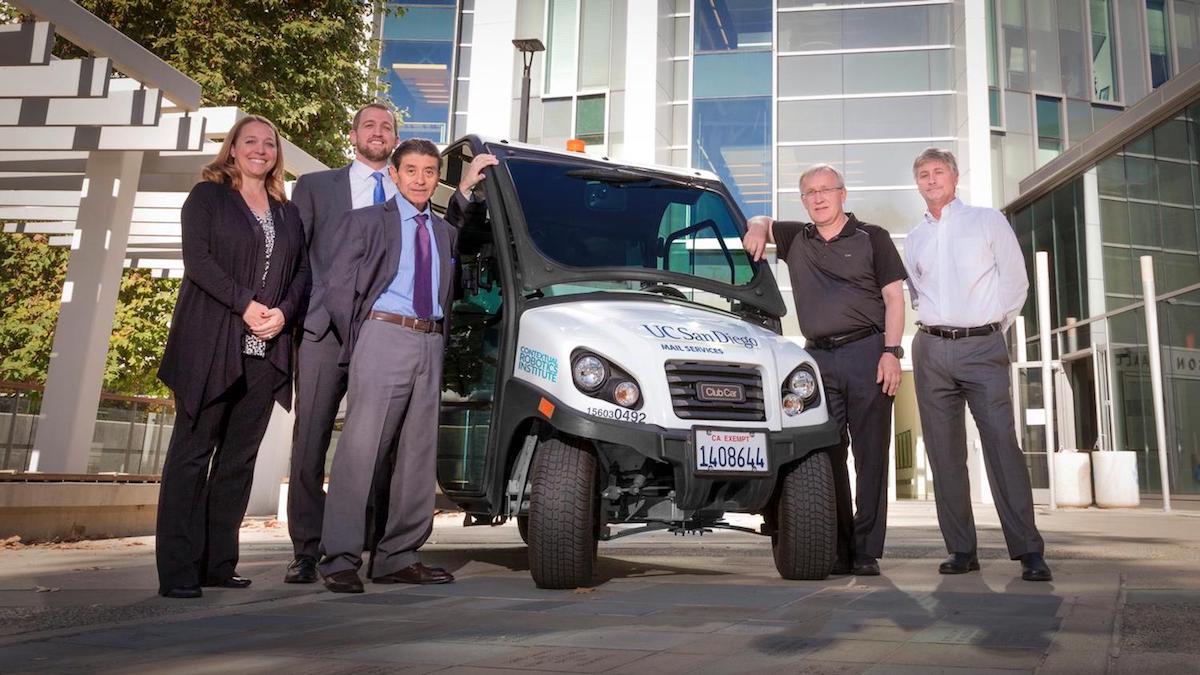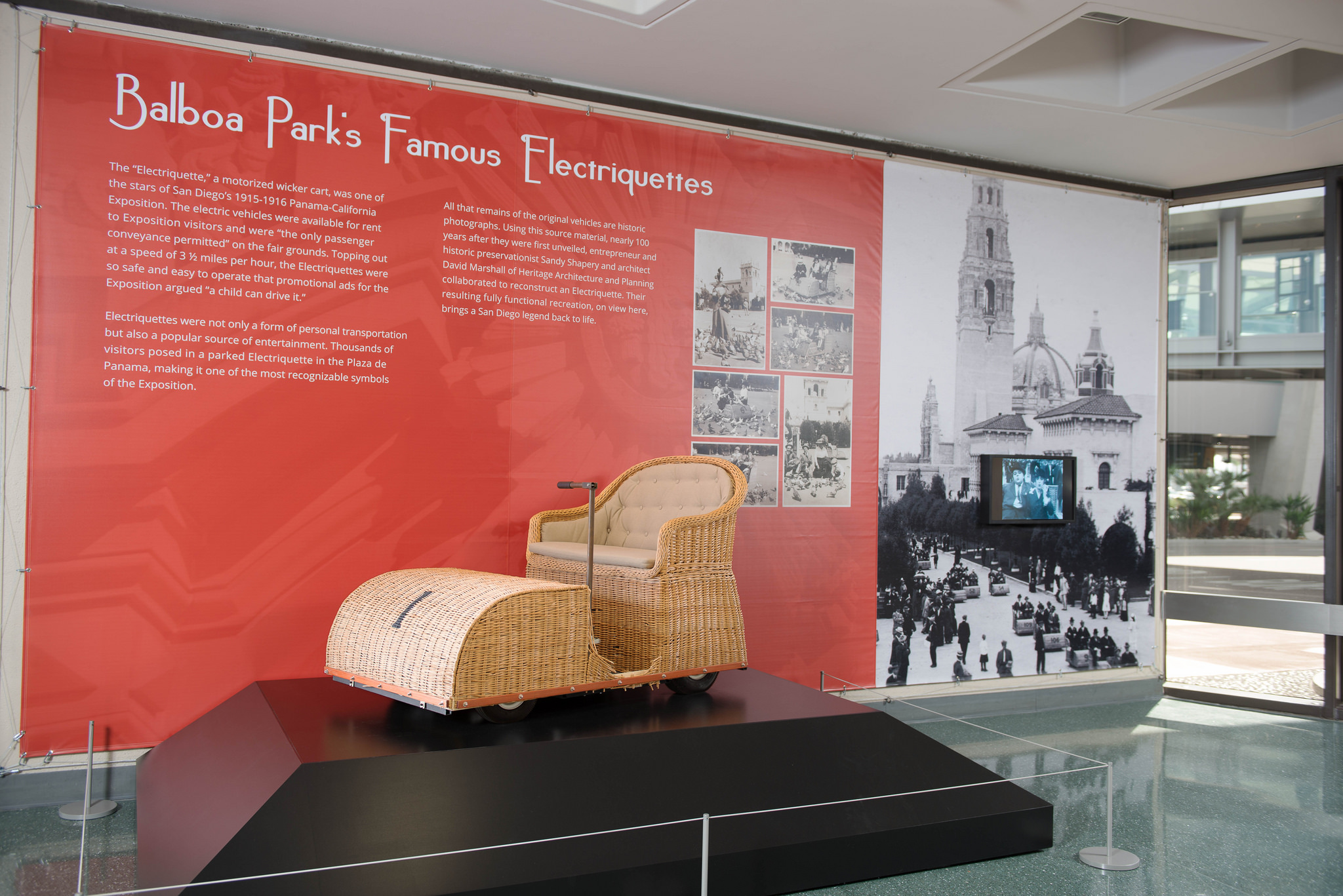Daily Business Report-Oct. 27, 2017
From left: Gisella Higgins, director of logistics; Jonathan Heinlein, associate director, business contracts; Frederico Gomez, manager, Mail Services — all three are part of the Integrated Procure-to-Pay Solutions unit on campus; and Henrik Christensen, director and Todd Hylton, executive director, Contextual Robotics Institute at UC San Diego.
Self-Driving Vehicles to Make Debut
on UC San Diego Roads in January
The University of California San Diego will turn its campus into a test bed for self-driving vehicles starting in January 2018.
The project will be implemented in stages. The first will be to put self-driving mail delivery carts on the road. The carts will run on algorithms developed by UC San Diego researchers who are part of the Contextual Robotics Institute. Back-up drivers will initially ride in the carts as a safety measure.
“We are trying to solve the ‘last mile’ problem, when autonomous vehicles get off the freeway and onto crowded neighborhood streets,” said Henrik Christensen, director of the Contextual Robotics Institute at UC San Diego, who is leading the project.
The campus is like a small city, Christensen added, with about 65,000 students, faculty and staff coming together every day and vehicles, bikes and pedestrians sharing the same space. The project is a partnership with Integrated Procure-to-Pay Solutions, a unit of UC San Diego Business and Financial Services. “We are turning the campus into a living laboratory,” Christensen said.
He will announce details of the project during the Contextual Robotics Forum Friday, Oct. 27, on the UC San Diego campus. (Same day registration is available.)
In the future, the project’s goal is to incorporate new technologies being developed at UC San Diego and broaden the scope of the test bed. The Jacobs School of Engineering is a leader in advanced wireless technologies, and some of these could make their way into the mail delivery carts. For example, carts could be equipped with radar technology developed by electrical engineering professor Gabriel Rebeiz and his team. Another possibility: vehicle-to-vehicle communication technologies developed by a team led by Sujit Dey, who is an electrical engineering professor at the Jacobs School, director of the UC San Diego Center for Wireless Communications, and director of the UC San Diego Institute for the Global Entrepreneur.
Christensen and his team chose mail delivery as the first phase of the project because it’s exactly the kind of repetitive task that robots excel at. The self-driving carts will make 13 different stops at drop points on campus, where employees come to pick up mail and distribute it to specific departments. The stops are set to occur at specific preset times.
As a first step, researchers will purchase two Polaris Ranger carts. The vehicles will be equipped with a panoply of sensors for self-driving vehicles provided by Illinois-based Autonomous Stuff as well as an open source software package, which will be supplemented by algorithms developed by Christensen and his team.
The researchers’ initial goals are predicting pedestrians’ movements five seconds out and predicting when surrounding vehicles are going to stop. Researchers will also build a simulated environment that mimics traffic patterns on the UC San Diego campus.
Christensen and colleagues will also partner with cognitive scientists on campus, as well as the UC San Diego Design Lab, to study how pedestrians interact with self-driving vehicles.
Long-term plans include operating self-driving carts to ferry people from the new trolley stations that will open on campus in 2021 to medical facilities on the east side of the UC San Diego campus. Christensen also envisions early testing taking visitors from the Birch Aquarium parking lot to the aquarium’s entrance.
The initial costs for the project, $150,000, is covered by Christensen’s start-up research funding provided by the Jacobs School of Engineering.
_________________
IDEA1 Brings, Live/Work Lofts, Urban
Apartments and Commercial Space to East Village
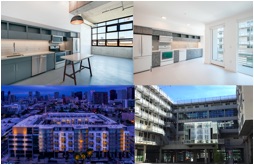
IDEA1, a new mixed-use community in East Village developed by Lowe, LaSalle Investment Management and I.D.E.A. Partners, will welcome its first residents on Nov. 10. With a total of 295 apartment homes, 5,000 square feet of restaurant space, and 7,700 square feet of creative office on the street level and a variety of common areas, IDEA1 is designed to help grow a community of entrepreneurs and fuel change makers, visionaries and professionals, according to developers.
“After seven years of working to bring this project to life, we are delivering on the promise of IDEA1,” said David Malmuth of I.D.E.A. Partners. “We didn’t design IDEA1 as a building, but instead as a series of experiences. We are eager to share these experiences with the San Diego community and look forward to collaborating with local creatives to expand this project further,” said Malmuth’s partner, Pete Garcia.
Located on the corner of Park and F Street, IDEA1 is now leasing apartments, which are available in a variety of floor plans including live/work lofts, one and two-bedrooms and penthouses
Each unit comes with up to 12-foot ceilings, city views, vinyl wood plank flooring, high-end cabinets, designer quartz countertops in kitchen and bath, barn door-style closet doors and full-size frontload washer and dryers. Residents also have access to the 2,000 square foot exercise room, rooftop clubhouse, outdoor deck, bike repair shop and water tower spa that overlooks the Downtown San Diego skyline and bay.
Young Hickory, a café that offers local coffee and craft beer, will open its second location in IDEA1 and will serve causal breakfast and lunch options. It will occupy 1,577 square feet near the corner of 13th Street and F Street. Lola 55 is a new fast-casual gourmet taco shop that will occupy another of the retail spaces at IDEA1. Executive chef/partner Andrew Bent trained with Luis Arellano at Criollo in Oaxaca, Mexico and delivers food at affordable prices. Both plan to open in early 2018.
Occupying the 7,700-square foot ground floor office space facing 13th Street is Seer Interactive, a digital marketing firm headquartered in Philadelphia. Seer will relocate their 30-person San Diego office to IDEA1 in December, providing the firm with the ability to more than double in size. Seer intends to utilize The Hub to host events with the User Experience (UX) community.
For more information: (619) 493-4429
_________________
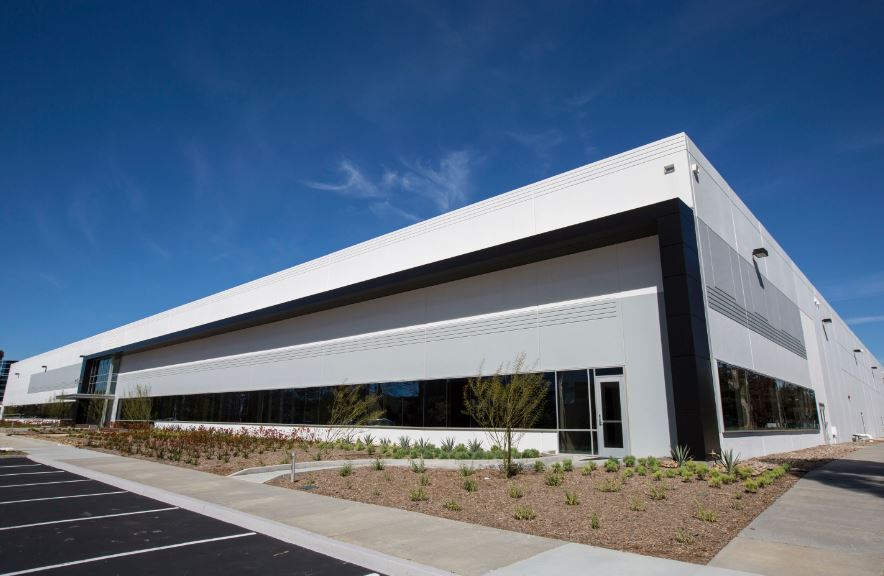
Realterm Logistics Acquires
Bernardo Mesa Technology Center
Realterm Logistics, a Realterm Global Company, has acquired Bernardo Mesa Technology Center from a joint venture between Walton Street Capital and Greenlaw Partners for $60.5 million. Located at 16550 Via Esprillo in Rancho Bernardo, Bernardo Mesa Technology Center is a 180,946-square-foot, 100 percent leased warehouse.
Realterm Logistics is the owner and manager of facilities serving the transportation industry. Walton Street Capital L.L.C. is a private equity real estate investment firm.
CBRE Capital Markets was the investment advisor in the transaction
_________________
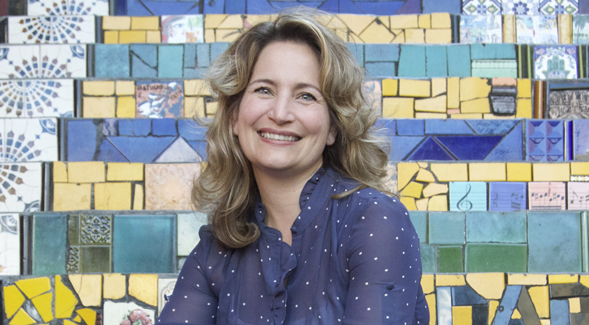
SDSU Welcomes New Brazil Program Director
By Coleen L. Geraghty | SDSU NewsCenter
The 2016 Olympic Games in Rio de Janeiro are a fading memory, Brazil’s economy is in recession and the country’s current president, Michel Temer, stands accused of corruption.
“Right now is a challenging and compelling moment in Brazilian history,” said Erika Robb Larkins, the new director of San Diego State University’s J. Keith Behner and Catherine M. Stiefel Program on Brazil.
She should know. The assistant professor of anthropology and sociology has lived half of her adult life in Brazil. Growing up, she toured the country with her mother, who played in a Brazilian percussion band. She returned as an adult to teach, do research and lead study abroad programs such as the one she’s planned for SDSU students in summer 2018: “Inequality and Activism in Brazil.”
_________________
Researchers Find Evidence of DNA
Damage in Veterans with Gulf War Illness
Researchers say they have found the “first direct biological evidence” of damage in veterans with Gulf War illness to DNA within cellular structures that produce energy in the body. The findings appeared in the journal PLOS One in September 2017.
A study that focused on mitochondrial DNA (mtDNA) included 21 veterans with Gulf War illness and seven controls. In blood tests, researchers observed more lesions and more mitochondrial DNA — that is, extra copies of genes — in veterans with Gulf War illness, relative to controls without the illness, suggesting excess DNA damage. Lesion frequency gives a direct measure of DNA damage, while the increased number of mtDNA copies reflects a response to the damage.
_________________
Personnel Announcements
Cubic Promotes Melanie Hagerty to Vice President of Innovation
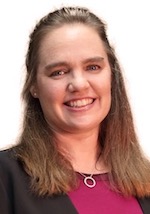
Melanie Hagerty, formerly a chief engineer of Cubic’s defense business segment, has been promoted to vice president of innovation in a move that takes effect Oct. 28.
Cubic said the 13-year company veteran will be responsible for overseeing the company’s innovation programs and leading product concept development, customer partnership and social system modernization efforts.
Hagerty has held engineering positions at the Cubic Global Defense organization and most recently managed design, program execution, growth and product development initiatives within the air ranges business.
Prior to Cubic, Hagerty worked at Raytheon and L3 Technologies in various roles such as design, test and lead systems engineer.
She also served as electronics and radar engineer at Hill Air Force Base in Utah.
“Melanie possesses exceptional leadership qualities that will continue to drive our vision for innovation,” said Brad Feldmann, president and CEO of Cubic Corporation. “Melanie’s extensive experience and background in engineering design, product development and program management makes her a strong asset to our leadership team.”
_________________

North San Diego Business Chamber
Plans International Travel for 2018
Trips to Portugal, Africa and Danube River Cruise
North San Diego Business Chamber’s international travel plans for 2018 include trips to Portugal in April, South Africa in August and the Danube in October.
Portugal is an inclusive package that includes 9 days/7 nights for $3249 with options to extend the trip a few additional days. Thursday Nov. 2, the chamber will host a complimentary preview meeting to talk about the Portugal trip and enlighten potential travelers of the amazing journey that is planned for them.
You don’t have to be a chamber member to travel.
Melissa DeLaCazada and several of her friends have been on all of the chamber trips. “Chamber trips are ideal for those traveling alone or with friends, and a great deal featuring all-inclusive travel destinations,” said DeLaCazada. “I’ve visited countries, always dreamed of visiting, and felt completely comfortable and safe doing so with the chamber.”
Working with agencies that plan chamber exclusive travel allows bigger group discounts and savings for those that travel with the North San Diego Business Chamber. The chamber generates a small amount of revenue from each trip that is used to subsidize programs and benefits for the chamber members.
“We’re offering the opportunity for the community to travel with chamber members, staff and board at competitive and inclusive rates,” said Debra Rosen, president and CEO of the North San Diego Business Chamber. “The chamber has traveled to China, Spain, Italy and the Rhine River and will be embarking on a trip to Ireland this next week.”

